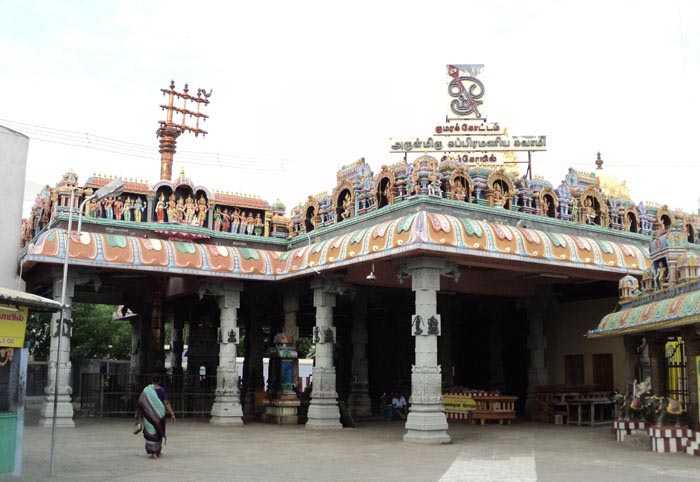Kumara Kottam Subrahmanya Swamy Temple

Information of Kumarakottam Subramanya Swamy Temple, Kanchipuram, Tamil Nadu
The Kumarakottam Temple which is also known as Kumara Kottam Subrahmanya Swamy Temple is devoted to the Hindu war god, Murugann who is also said to be the son of Lord Shiva and Parvati. The temple is situated in Kanchipuram city in the state of Tamil Nadu. The temple is believed to be among the seven sacred cities or "mokshapuris" of the country. These sacred cities are believed the places from where moksha or salvation can be attained.
Kumara Kottam Subrahmanya Swamy Temple Religious Significance
The temple of Sri Subramaniya Swami in the city of Kanchipuram holds an important position with regard to the Hindu mythology. The pilgrimage journey of the Hindus includes a compulsory visit to this temple in order to make to make it a complete journey. Lord Shiva is found in a "Soma Skandha" posture in this temple. The pose relates to a position where Lord Shiva remains seated with goddess Shakthi on his left and his own son that is Lord Subramanya in between them. The temple of Lord Shiva in Kanchipura is situated together with Kamakshi Amman or Shakthi's shrine which is on the left.
The temple includes a holy Kanda Puranam composed by the eminent saintly researcher Kachiappa Sivachariyar and is full of praise for the Lord Murugan. According to the details provided by Kachiappa, it has been learnt that every day he used to pen down his enthused narration of Lord Murugann's or Skanda's career and placed the day's narration in Lord Subrahmanya's mulasthanam in the evening at Kumara Kottam. It is said that every night, astonishingly, Lord Murugann himself used to alter the script of Kacciappa and corrected it. Therefore, the script Kanda Puranam is acknowledged as the exact reliable narration of the Lord's career as it is believed to carry the consent of the Lord himself.
Kumara Kottam Subrahmanya Swamy Temple Mythological Significance
The Hindu mythological records state that our creator that is Lord Brahma was punished by Murugan as a reason for his lack of knowledge regarding the connotation of Pranava mantra. Lord Murugan punished him by giving knocking him hardly with his fist on the vortex and also held him captive soon after. Later, Lord Murugan realized that those were actually the creation responsibilities of Brahma. In the temple of Kumara Kottam, Lord Murugan is known to have fixed himself in the representation of a creator or Brahmasasta in the womb chamber popularly known as the sanctum.
Kumara Kottam Subrahmanya Swamy Temple Architectural Significance
The Kumarakottam Temple or the Subramaniya Swamy Temple similar to the other South Indian temples has been constructed according to the Dravidian style of architecture. This prehistoric temple was reconstructed in the current form way back in the year 1915. Presently, after being reconstructed, a temple peak can be evidently observed on top of the prime sanctum which is made of granite stone and appears similar to a circular shaped dome which is believed to date back to the reigning period of the Cholas. The temple walls are adorned with pilasters and corbels coupled with epigraphs. The temple houses two circumambulatory passages and several family deities have been established in the subshrines surrounding it. The position of the Kumara Kottam temple which is right in between Sri Kamakshi Amman temple and Sri Ekambereswarar temple jogs the memories of the worshippers regarding the seated posture of Lord Murugan that is the Somaskanda form where the Lord is found to be in a seated position amid Parameswara and Parvati. The lingam that is worshipped by Lord Murugan is consecrated in a different shrine which is situated inside the temple area and is known as Senapatisvara or Devasenapatisar.
- Andhra Pradesh Temples
- Assam Temples
- Bihar Temples
- New Delhi Temples
- Goa Temples
- Gujarat Temples
- Jammu and Kashmir Temples
- Karnataka Temples
- Kerala Temples
- Madhya Pradesh Temples
- Maharashtra Temples
- Odisha Temples
- Punjab Temples
- Rajasthan Temples
- Sikkim Temples
- Tamil Nadu Temples
- Telangana Temples
- Uttar Pradesh Temples
- Uttarakhand Temples
- West Bengal Temples